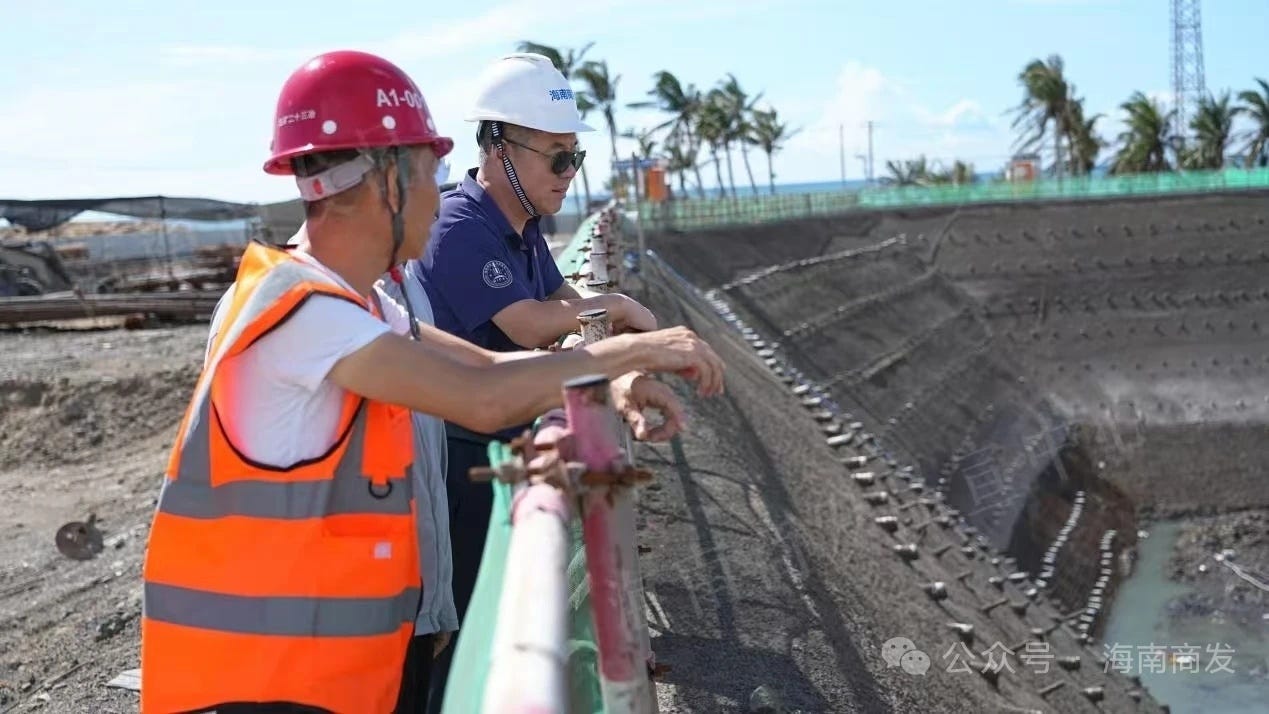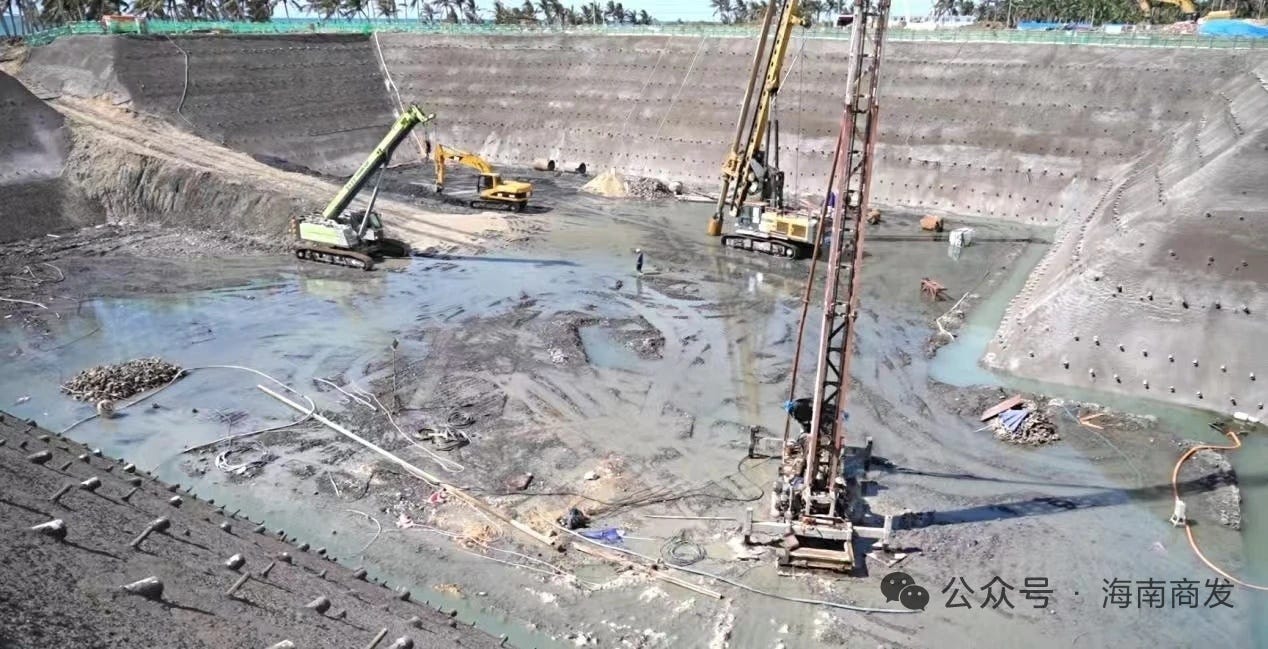Progress on New Launch Pads Continues Despite Weather Challenges
And what's the holdup with launches from the site?

Hainan International Commercial Aerospace Launch Co Ltd (海南国际商业航天发射有限公司), often shortened to HICAL and operator of the Wenchang Commercial Space Launch Site, announced back at the beginning of the year that it had begun phase two of construction of its launch site on the east coast of Hainan province (海南). In late February, contractors were awarded various contracts to expand the site.
The second phase of construction plans for building two new launch pads, a rocket assembly and testing building, a tracking, telemetry, and communication station, as well as the site’s second launch command and control center. Alongside new facilities, necessary pipelines for propellant fueling and consumables systems are under construction.
New launch pads for the site are Commercial Launch Pad 3 and Commercial Launch Pad 4, both liquid propellant multi-user launch pads like Commercial Launch Pad 2 (which can support rockets three to five meters in diameter). Those launch pads sit on the coast south-west of the currently built-up launch infrastructure in Wenchang.
Work on those launch pads is well underway, with HICAL sharing on June 27th that excavation work for Pad 3 reached a depth of ten meters, while Pad 4 has reached a depth of thirteen meters. Although recent rainfall has slowed work, several high-power pumps have been brought in to clear water from the work site.
Chairman of HICAL, Yang Tianliang (杨天梁), also Party Secretary of the company, visited the site shortly after the rainfall to formulate new plans to keep the construction project on schedule despite challenges presented by the weather. He also advised teams to ensure proper safety measures are in place, along with improving monitoring of environmental conditions.
On June 27th as well, China Construction Fifth Engineering Bureau (中国建筑第五工程局有限公司) shared that they have won a contract to build Commercial Launch Pad 3’s consumables and propellant pipelines, lightning towers, and other launch support infrastructure. No work timelines were shared by the company.
As of January, officials believe the new facilities and launch pads can be operational two years after work began. Once complete, the three multi-user pads are expected to support many launch missions for a variety of launch vehicles each year.

So far, the Wenchang Commercial Space Launch Site has only supported two launch missions, despite being declared operational in mid-2024. The first was for the debut flight of the Long March 12 in November 2024, from Commercial Launch Pad 2. A second mission from the site occurred four months later with a Long March 8 flying from Commercial Launch Pad 1.
There hasn’t been a lack of trying to launch from the site, however. In March, the second Long March 12 was being prepared for flight and in May got as far as being fuelled, before being returned to the launch vehicle processing building. Also in May, a Long March 8A was being prepared for launch, and then it also returned to launch processing facilities. Both vehicles are said to be undergoing a root cause analysis on some faulty components.
Notably for the commercial launch site, vehicles launched and prepared to launch from the site so far have been from state-owned enterprises, the Shanghai Academy of Spaceflight Technology, with the Long March 12, and the China Academy of Launch Vehicle Technology, with the Long March 8 and 8A.
It has been rumoured that schedule conflicts have led to privately-backed liquid-fuelled launch vehicles to move debut flights from Wenchang Commercial to the Jiuquan Satellite Launch Center, necessitating building numerous new launch pads. This is rather expected for new rockets, especially for new companies, as even in well-funded Western enterprises, delays to debut flights are common. It does not help that these rockets would need to share Commercial Launch Pad 2, which only has around sixteen launch slots per year, assuming no delays.
One such rocket was said to be Space Pioneer’s Tianlong-3, which has not performed a debut flight yet for obvious reasons. Another is Galactic Energy’s Pallas-1. Both of those rockets have had rather fluid schedules in the lead-up to flight, with Space Pioneer now working on their own launch pad at Jiuquan.
While construction at the site is ongoing, Party Secretary of Hainan, Feng Fei (冯飞), inspected facilities in and around the launch site on June 26th. During his inspection, Feng Fei was shown Commercial Launch Pad 1, the launch vehicle processing facility, and progress on the nearby satellite ‘super factory’. His inspection was reportedly to align realities at the site with future provincial policy and support, while promoting safe development efforts.

This inspection came a few weeks after Hong Kong and Hainan officials agreed to explore the possibility of establishing ‘four communities’ of commercial launch innovation, satellite intelligent manufacturing, aerospace tourism integration, and international cooperation demonstration to prove a path of market-driven commercial space cooperation under the ‘One Country, Two Systems’ framework1. A potential partnership between the two regions would lean on Hong Kong’s unique strengths in financial services and space technology and Hainan’s capabilities and potential in commercial space launches.
One Country, Two Systems is a governance principle employed by China for the Hong Kong and Macau Special Administrative Regions, originally intended to facilitate reunification with Taiwan Province. Under One Country, Two Systems, regions continue to have their own governmental system, legal, economic, financial affairs, and trade relations with other countries.



